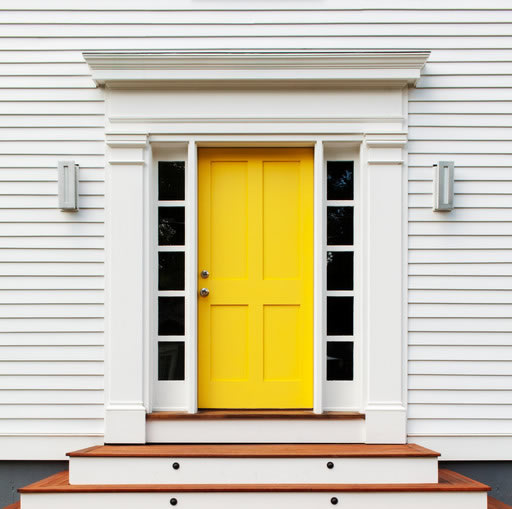Door siding, or the materials and trim surrounding exterior doors, is crucial for enhancing a home’s aesthetic appeal and protecting it from environmental elements. This siding can be crafted from various materials, each offering unique benefits; wood provides a classic, customizable appearance but requires regular maintenance, while vinyl offers a durable, low-maintenance alternative that can effectively mimic more natural textures. Fiber cement is celebrated for its robustness, being resistant to fire, termites, and rot, making it ideal for harsh weather conditions, whereas aluminum, another sturdy option, supports modern designs with its fire resistance and minimal upkeep. When selecting siding, homeowners should consider factors like climate, the home’s exterior design, and their maintenance willingness. Proper installation is crucial—accurate measurements and appropriate tools like levels and saws ensure the siding fits perfectly and functions as intended. Regular maintenance, including cleaning and inspecting for damage like moisture ingress or warping, extends the lifespan and preserves the appearance of door siding, ensuring it continues to enhance the home’s curb appeal and structural integrity effectively.

Door siding, or the trim and material that surrounds your exterior doors, plays a vital role in both the aesthetic appeal and functionality of your home. Not only does it contribute to the first impression of your house, but it also provides essential protection from the elements. In this guide, we’ll explore the different types of door siding, how to choose the right materials, and tips for installation and maintenance.
1. Understanding Door Siding
Door siding includes all the materials around the door frame, from the trim that outlines the door to the panels or siding that fits beneath and beside the door. It can be made from various materials, each offering distinct benefits and styles. This trim is crucial for sealing out the weather and can also significantly enhance the visual appeal of your entrance.
2. Types of Door Siding Materials
Wood: Traditional and versatile, wood siding offers a classic look that can be painted or stained to match any home’s exterior. It requires more maintenance but provides a natural and customizable option.
Vinyl: A low-maintenance, durable, and affordable choice, vinyl siding resists moisture and decay and can mimic the look of natural materials.
Fiber Cement: Known for its durability and resistance to fire, termites, and rot, fiber cement siding is a robust option that can also be painted to suit your home’s style.
Aluminum: Metal sidings like aluminum are durable, fire-resistant, and nearly maintenance-free. They can also be painted and are excellent for modern home designs.
3. Choosing the Right Siding for Your Door
Choosing the right siding involves considering durability, maintenance, cost, and aesthetic compatibility with your home. Factors like climate and exposure to the elements should guide your material choice. For instance, vinyl and fiber cement are excellent in areas with high humidity or frequent storms, while wood might be more suitable for a controlled climate.
4. Installation Tips
Measuring and Planning: Measure the door area meticulously to ensure that you purchase the right amount of material. Consider any irregularities around your door frame and plan the layout to minimize waste.
Tools and Equipment: You’ll need tools such as a tape measure, saw, level, and possibly a nail gun. Ensure you have all necessary tools on hand before beginning the installation.
Installation Process: Start by removing any old siding and ensuring the area is clean and free of der new siding, ensuring each piece is level and securely attached.
5. Maintenance and Care
To ensure longevity, regular maintenance is essential. Wood may need periodic staining or painting, while vinyl and aluminum can be kept in good condition with regular cleaning using mild soap and water. Inspect your siding annually for signs of damage or wear and address any issues promptly to prevent further deterioration.
6. Common Problems and Solutions
Moisture Damage: Ensure your siding has proper caulking and sealants to prevent water ingress.
Warping or Buckling: This can occur if the siding is not properly installed. Make sure there is a little room for expansion and contraction due to temperature changes.
Door siding is more than just a decorative frame for your door; it’s a critical component of your home’s weatherproofing and insulation system. By choosing the right materials and ensuring proper installation and maintenance, you can enhance both the beauty and efficiency of your home. Whether you’re updating old, worn siding or installing new siding on a recent addition, these tips will help you achieve great results that last.